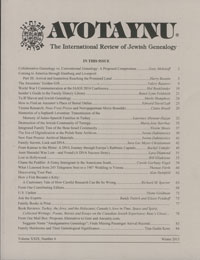The WIRTH project, which is a group of researchers and their relatives whose Y-DNA belongs to the J2a4 haplogroup, is about to construct a phylogenetic tree of all the men in the project, showing how they are related to each other, and more important, when the different branches of the tree split off.
We know that all the men in the Bacharach and WIRTH projects are related to each other. We think their shared common male ancestor lived some time in the middle ages. However, some people are more closely related. Their common ancestor might have lived in the 1600s or even more recently. This is what the tree will show in a graphic representation.
We all know that DNA mutates from time to time. The mutations occur randomly, but there are statistical models for how frequently this happens, so a geneticist can take a large group of data and construct a model showing the likely times of the various mutations. This helps show who is most closely related to whom.
Here’s a super-simplified example: If your great-great-grandfather had four sons, they all inherited his Y-DNA. Because of random mutations, one or more of them could have a slight difference from their father and their brothers. Let’s use colors to illustrate this. Suppose one’s Y-DNA consisted of four colors, and your great-great-grandfather had a pattern of RED–RED–GREEN–GREEN–BLUE–PURPLE (not exactly how this works, but just a simple analogy). All four of his sons would inherit the same pattern, unless, randomly, one changed (not a frequent occurrence, but random). Suppose Son#1 had a mutation so that his pattern was RED–RED–GREEN–BLUE–BLUE–PURPLE but the other three sons had the original pattern. From that point forward, all male descendants of Son#1 would have the new pattern, with 2 blues instead of 2 greens. They’re all still descendants of the great-great-grandfather, but their DNA has a slight difference. Because of where the difference occurs and how great the difference is, a geneticist can make an estimate of which generation that mutation occurred in. If we compare two descendants from two different branches in a later generation, even if we have no paper trail, we can look at which mutations they share and which mutations they don’t share and estimate how long ago their most recent common ancestor (MRCA) lived. This is especially useful for those who don’t have a very long paper trail.
To summarize:
- All the men in the Bacharach/Bachrach project share a common male ancestor with all the men in the WIRTH project
- A geneticist is about to create a chart of all the members of the WIRTH project and how they are related
- Any Bacharach/Bachrach project member who wants to be part of this chart should join the WIRTH project ASAP
- Any Bacharach/Bachrach descendant, with the surname, who has not been tested should order a test while FamilyTree DNA is running a special (get 67 markers and then we’ll need an upgrade to 111). If you need financial help to afford the test, please contact us.
